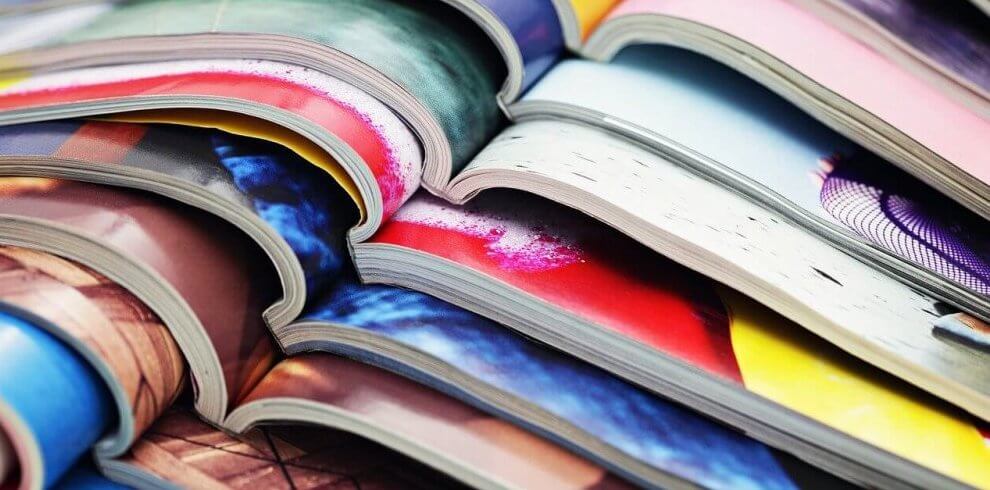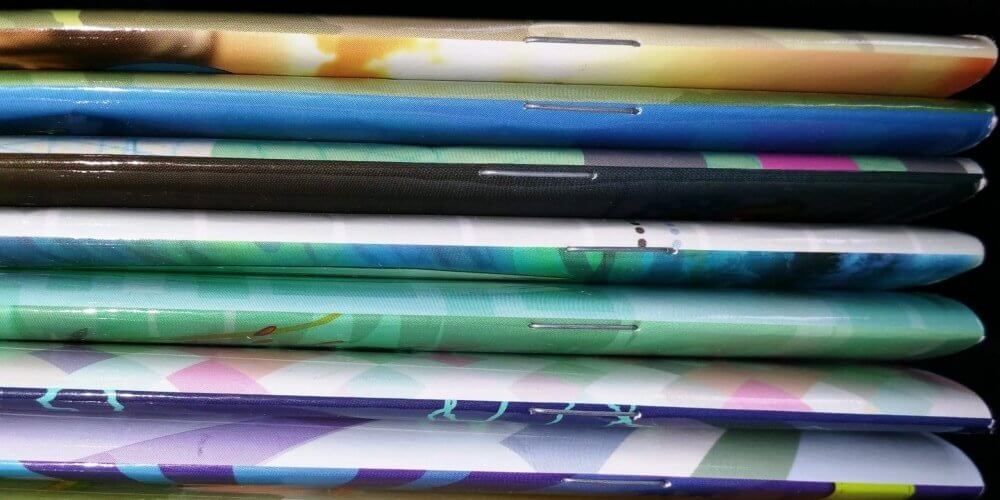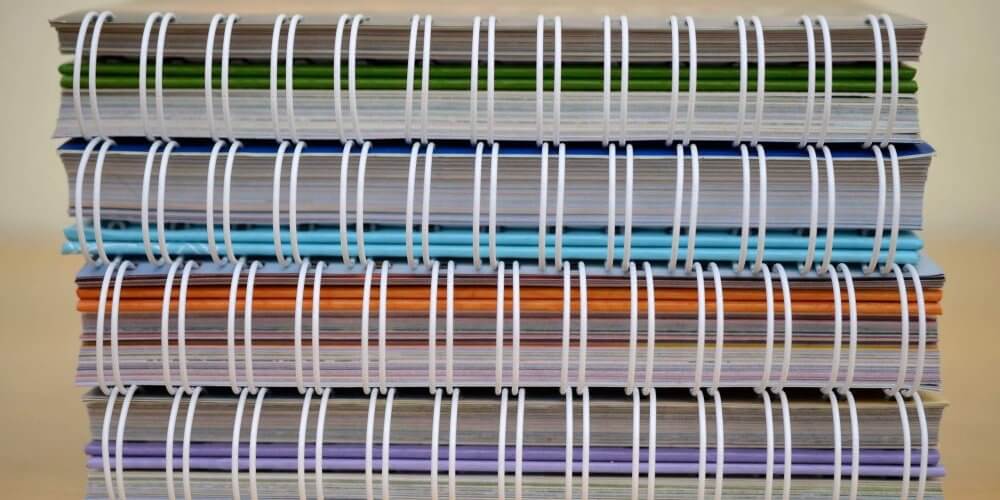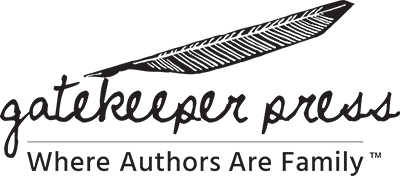After typing your book, then enlisting the aid of an ace proofreader and editor, you arrive at a pivotal moment! The fruits of your labor result in a stack of pages just begging to be printed and bound.
So, exactly which binding method should you select for your book?
The ancients never had such decisions to make! Their handwritten parchment pages were simply sewn together and, voila! a book was born.
Fast-forward a dozen centuries, and modern man now has a plethora of bookbinding options to consider. Who knew that so many binding options exist?
After all, we seldom give a minute’s thought to the particular types of binding techniques. We only take notice when a book falls apart in our hands!
The bookbinding decision is an important step in the bookmaking process that aligns appropriately with its particular genre.
To arrive at the best bookbinding style for your book, it helps to learn a few bookbinding basics.
Types of Book Binding
While there are multiple types of binding available, the good news is that the type of book project will limit those options to the most appropriate.
Certain projects call for particular formats. For example, when was the last time you saw a comic book with a hardcover case binding?
Additionally, the type of book—paperback vs. hardcover—affects the types of binding available to you.
Selecting the best bookbinding method for your project can impact its visual appeal, the user experience, and even unit sales. Consider the following types of bookbinding styles:
Hardcover

Hardcover, or case binding, use a heavy paperboard or binder’s board to create a sturdy and durable product.
The boards may be covered with cloth, leather, or thick paper, adding to its substantial appearance. The interior pages are sewn together in sections called signatures before being glued to paper, which is then glued to the spine of the cover.
Hardcover binding is considered the best binding method for books with a minimum of 60 pages. It provides superior strength as well as an array of artistic finishing options.
Case binding, however, is the most costly binding option. In addition, the product will weigh more, which will add to the shipping costs.
Perfect Binding

Perfect binding is the method used for printing softcover, or paperback, books. Its name, “perfect binding,” refers to the pages that have been cut to be the same size so that they will stack up perfectly.
The perfect binding technique takes the cut pages and attaches them with a flexible adhesive called PUR into the spine of a soft cover that wraps around the pages.
Perfect binding is the popular style used for paperback novels, memoirs, portfolios, workbooks, and catalogs.
These perfect bound books have a professional appearance and provide a more economical binding option compared to case binding. Not only are the printing costs lower, but the shipping costs are lower, too.
Saddle Stitch

For publications that are not expected to have a long shelf life, the economical saddle stitch binding option is excellent.
This option is appropriate for projects with 8-80 pages.
The saddle stitch technique involves stacking the folded pages and then, while opened up, are placed over a saddle-like conveyor where they will be “stitched” by metal staples. Most saddle-stitched books receive two staples, although larger formats may have more.
The saddle stitch option is popular for pamphlets or tracts, comic books, and magazines. These products come in a wide range of sizes. Because of the ease of use and low costs involved, a printer can easily produce as few or as many copies as desired. Products are lightweight and lend themselves to bulk mailing for lower shipping costs.
Spiral Binding

Spiral binding involves punching a series of holes along the edge of the stacked pages. Then, a plastic or metal coil is winded through the holes from end to end to attach the pages.
This type of binding does not provide a spine, but a cover can be affixed made from plastic or heavy cardstock.
The spiral binding option is a great choice for cookbooks, business presentations, workbooks, manuals, or coloring books. The spiral binding allows the pages to rotate 360 degrees, making it conducive to writing on the pages without bending a spine.
The coils are available in varying diameters allowing spiral binding to accommodate a wide range of page counts. The plastic coils come in a variety of colors, which can enhance the visual impact.
Thermal Binding
Thermal binding secures the pages to an adhesive binding strip through the use of heat. The edges of the pages are inserted flush into a thermal binding machine, which then heats and melts the adhesive, securing the pages.
Thermal binding is a good option for creating a business proposal or professional or academic presentation at a low cost. A transparent or opaque plastic cover and backing add a finishing touch.
Do You Need a Dust Jacket?
In addition to the types of binding is another consideration—the dustjacket.
The dust jacket is the outer paper cover that wraps a hardbound book.
Dust jackets are often made of 80lb glossy stock with flaps upon which the book blurb, author biography, and critical reviews reside on the inside covers. The dust jacket functions as a protector of the actual hardcover, while also providing bold visual appeal to the product.
Because the book details are printed on the inside flaps, the cover can enjoy more space to feature cover design and graphics that help sell the book.
Deciding whether or not to include a dust jacket for your book is strictly a matter of personal preference. Some authors vehemently despise them, while others consider a book without a jacket to be naked.
Pros noted include a dust jacket’s eye-catching shelf appeal, that the book looks more “finished,” and that the jacket adds collectability value.
Cons cited point to the jacket becoming tattered and worn, diminishing the visual appeal of the book, that a dust jacket adds to the unit cost, and that the jacket is simply an unnecessary encumbrance.
You get to decide whether to jacket or not.
Should You Bind Your Own Book?
When reviewing the various bookbinding options available, it may be tempting to consider taking on the task yourself. You might decide to take the file to a local printer and have them print the pages and apply the spiral binding technique or use the perfect binding method. The commercial print shop will most likely be limited in their materials and technological capabilities, resulting in an inferior outcome. If it is a sleek, professional product that you are aiming for, it is best to leave the task to the experts.
Get Your Book Professionally Published
Penning your own novel, memoir, or non-fiction manuscript is a rewarding experience that is often compared to giving birth.
Beginning with the blank stare of that first blazing white Word document, you spent untold hours painstakingly crafting something that is now ready to take to market. Why fret over the minutia involved in getting it published?
By enlisting the services of a book publishing service like Gatekeeper Press, you will be placing your manuscript into competent hands that can guide the entire process.
Making the big decisions, such as the types of binding to use or whether to include a dust jacket, can be less stressful when you rely on the expertise of those who understand the publishing business inside and out.
Book a free consultation with Gatekeeper Press to inform your bookmaking decisions, or get a quote.

